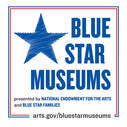Dudley
Carta prima, Generale d'America dell'India Occidentale e Mare del Zur
Florence 1646
Carta prima, Generale d'America dell'India Occidentale e Mare del Zur
Florence 1646
As the title suggests (A general map of America from the West Indies to the Southern Ocean), (8) this map covers a wide area both east and west as well as north and south. Of particular interest, however, is the insert map labeled America Maiestrale (North America), which covers come of the same coastline as shown in the previous map but, importantly, extends further north to 43 degrees N latitude. Both maps show a large bay between Cape Engano at 31 degrees N latitude and C. di Cedros at 29 degrees N latitude. In this map, however, the greater possible extent of the bay is suggested by dotted lines and the name Golfo Profundo, together with the note: "This gulf has recently been reported as very large but has not been well explored." One can only speculate that Golfo Profundo may mark the large opening to the south of Cape Engano that was observed by Martin d'Aguilar on Vizcaino's expedition in 1602 and suggested that to him California was an island rather than a peninsula.
Cape Mendocino is shown in the northwest corner of the insert map at almost 43 degrees N latitude. It is actually just above 40 degrees N latitude, but in the manner of a correction, there is a note to the right that reads, "Some believe Cape Mendocino is at 41 degrees N Latitude." Further south, below 41 degrees N latitude, is a large bay labeled P di Don Gasper, with an anchor symbol indicating safe anchorage. Just below is another, smaller bay, also with an anchor symbol, labeled P. dell nuouo Albion scoperro dal Drago C. Inglese (Point New Albion discovered by the English Captain Drake). Just below 37 degrees N latitude, again with an anchor symbol, is P. di Moneerei (Monterey Bay), and just below 35 degrees N latitude is P. di S. Diego (San Diego). Both Monterey Bay and San Diego were discovered and named by Vizcaino but, because of the Spanish policy of secrecy, the map drawn by Vizcaino's navigator was not published until 1802. The accuracy of place-names and their locations does suggest that Dudley may have had access to a variety of otherwise secret sources, in this case particularly those of Drake and Vizcaino. Northern California is labeled Nvova Albione (New Albion), the name bestowed by Sir Francis Drake in 1579, and the cartographer continues the use of Quivira R (Kingdom of Quivira), locating it just to the east of P. di Don Gasper.
(8) Well into the seventeenth century the Pacific Ocean was frequently labeled as the Southern Ocean.
PREVIOUS MAP
Cape Mendocino is shown in the northwest corner of the insert map at almost 43 degrees N latitude. It is actually just above 40 degrees N latitude, but in the manner of a correction, there is a note to the right that reads, "Some believe Cape Mendocino is at 41 degrees N Latitude." Further south, below 41 degrees N latitude, is a large bay labeled P di Don Gasper, with an anchor symbol indicating safe anchorage. Just below is another, smaller bay, also with an anchor symbol, labeled P. dell nuouo Albion scoperro dal Drago C. Inglese (Point New Albion discovered by the English Captain Drake). Just below 37 degrees N latitude, again with an anchor symbol, is P. di Moneerei (Monterey Bay), and just below 35 degrees N latitude is P. di S. Diego (San Diego). Both Monterey Bay and San Diego were discovered and named by Vizcaino but, because of the Spanish policy of secrecy, the map drawn by Vizcaino's navigator was not published until 1802. The accuracy of place-names and their locations does suggest that Dudley may have had access to a variety of otherwise secret sources, in this case particularly those of Drake and Vizcaino. Northern California is labeled Nvova Albione (New Albion), the name bestowed by Sir Francis Drake in 1579, and the cartographer continues the use of Quivira R (Kingdom of Quivira), locating it just to the east of P. di Don Gasper.
(8) Well into the seventeenth century the Pacific Ocean was frequently labeled as the Southern Ocean.
PREVIOUS MAP






